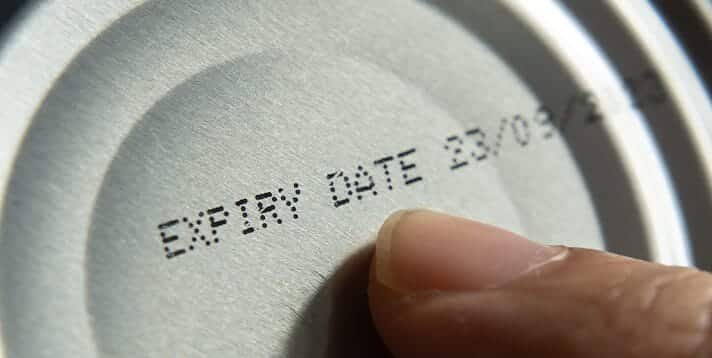Every pet owner’s journey is filled with unique challenges and joys, especially when it comes to ensuring the optimal health of their beloved dogs. Understanding and monitoring the sodium content in your dog’s food is crucial among the many aspects of canine care.
This blog post dives into why keeping an eye on sodium is essential for your pet’s well-being, blending expert insights with practical advice.
Sodium’s Pivotal Role in Canine Health
Sodium plays an indispensable role in maintaining your dog’s overall well-being. As a critical electrolyte, it regulates bodily fluids, ensures proper nerve function, and facilitates muscle movements. Its presence in the right amount is essential in maintaining cellular function and fluid balance in your pet’s body. This balance, however, is delicate. Too much or too little sodium can significantly affect a dog’s health.
Excessive sodium intake in dogs can lead to hypertension, a condition that places additional strain on the heart and blood vessels. Over time, this can lead to chronic heart conditions and potentially kidney damage. Elevated sodium levels can also cause an imbalance in fluid retention, leading to edema or swelling in various body parts. Conversely, although less common, sodium deficiency is equally concerning. It can result in symptoms like poor growth, weight loss, lethargy, and, in extreme cases, may affect the brain function in dogs.
Bella’s Story: A Case Study in Sodium Management
To illustrate the importance of managing sodium intake, let’s examine the case of Bella, a lively Labrador with a zest for life. Bella’s story began when her owners noticed a change in her behavior. Once energetic and playful, she exhibited signs of fatigue, increased thirst, and reduced appetite. A visit to the veterinarian revealed that Bella’s regular diet was high in sodium, leading to early stages of hypertension.
The veterinary team worked closely with Bella’s family to modify her diet. They transitioned her to a specially formulated low-sodium dog food, ensuring it met all her nutritional requirements. This change was supplemented with regular check-ups to monitor her blood pressure and overall health.
Bella’s recovery wasn’t just about changing her food; it was a journey that involved educating her family on the right balance of nutrients. They learned to scrutinize dog food labels for sodium content and to understand the nutritional needs of Labradors. Bella’s family also discovered the risks of offering human food, which often contains high sodium levels, to pets.
Through these changes and ongoing veterinary guidance, Bella gradually regained her vigor. Her case highlights the critical role of a balanced diet in managing health issues related to sodium. It also underscores the importance of regular veterinary check-ups to detect and address such problems early.
Bella’s story reminds all pet owners about the crucial balance of nutrients in a dog’s diet. It’s a testament that with the proper care and attention to dietary details, health issues related to sodium can be effectively managed, allowing our furry friends to lead happy, healthy lives.
Deciphering Dog Food Labels
Venturing into the world of dog food labels can be daunting. It’s crucial to understand these labels for your furry friend’s health. Dog food companies list minimum and maximum sodium levels, but these figures don’t always tell the whole story.
For instance, a study found significant variances in sodium content among popular dog food brands. Thus, seeking a veterinarian’s guidance becomes indispensable for assessing the proper sodium levels, considering your dog’s age, breed, and health needs.
Crafting a Balanced Diet
A healthy diet goes beyond just monitoring sodium. It’s about striking the right balance. Integrate a variety of foods – vegetables, lean meats, and whole grains – to ensure a nutrient-rich diet for your dog. Remember, while sharing table scraps might seem harmless, these often contain high sodium, disrupting your pet’s dietary balance. Instead, opt for specially formulated dog food and always check with your vet before introducing new foods.
Identifying Sodium-Related Health Issues
Your pet’s behavior can signal imbalances in sodium intake. Increased thirst, frequent urination, or lethargy could indicate high sodium levels. Such symptoms, if ignored, might escalate into severe health problems. Regular veterinary check-ups and being vigilant about changes in your dog’s behavior are vital to maintaining their health and happiness.
Selecting Low-Sodium Dog Food
With many dog food options, choosing a low-sodium brand can significantly impact your dog’s health. These foods are specially formulated to provide essential nutrients without the risk of excessive sodium. However, it’s important to remember that ‘low-sodium’ doesn’t mean ‘no sodium.’ Your vet can recommend the best-suited brand for your pet’s dietary requirements.
Conclusion
In the journey of pet parenting, understanding and managing your dog’s sodium intake is a vital chapter. It’s not just about averting health issues; it’s about nurturing a joyous, active life for your furry friend.
At Bare Pets, we understand this deeply. Our commitment to simple, honest, and nutritious pet food mirrors your dedication to your pet’s well-being. With expertly formulated options that prioritize health without compromising taste, Bare Pets is the choice for informed, caring pet owners.
Ready to make a switch that matters? Visit Bare and explore our range of premium, balanced dog food. Your pet deserves the best, and with Bare, that’s precisely what you’ll give them – a meal that’s as delicious as it is nutritious. Remember, a healthy pet is a happy pet, and at Bare, we’re all about bringing more joy and health into your pet’s life, one meal at a time.











